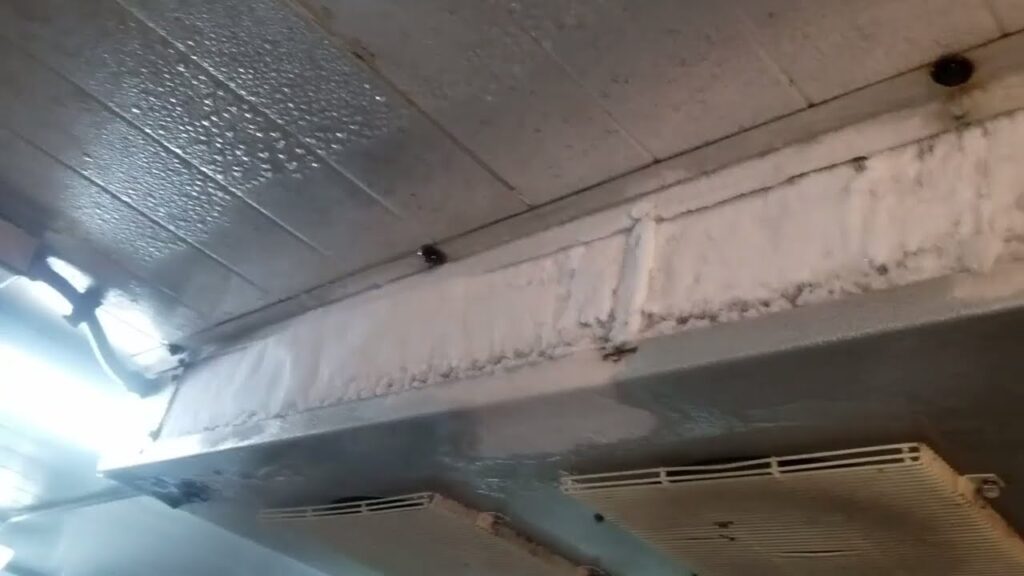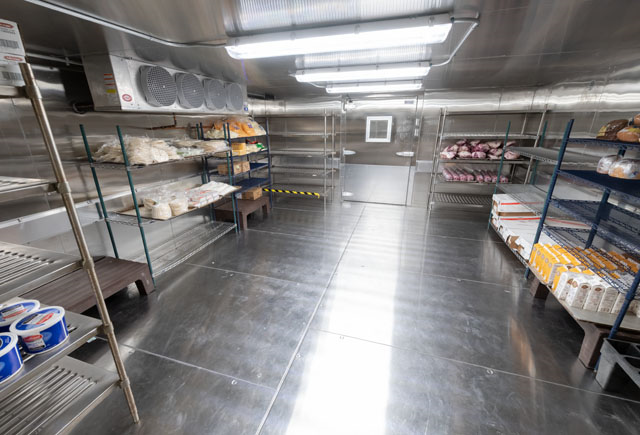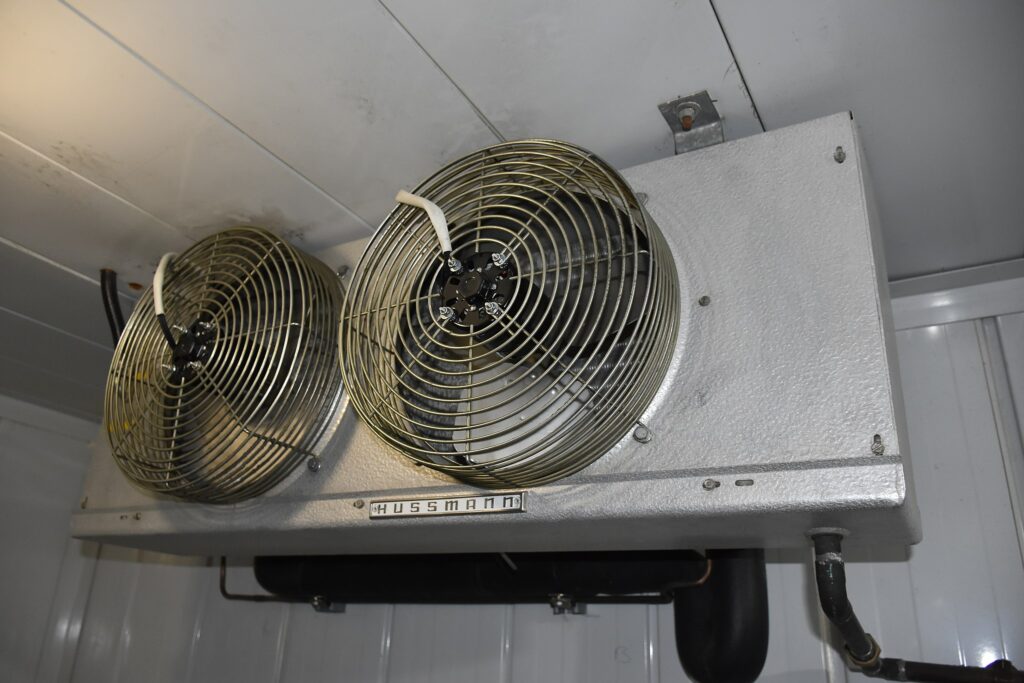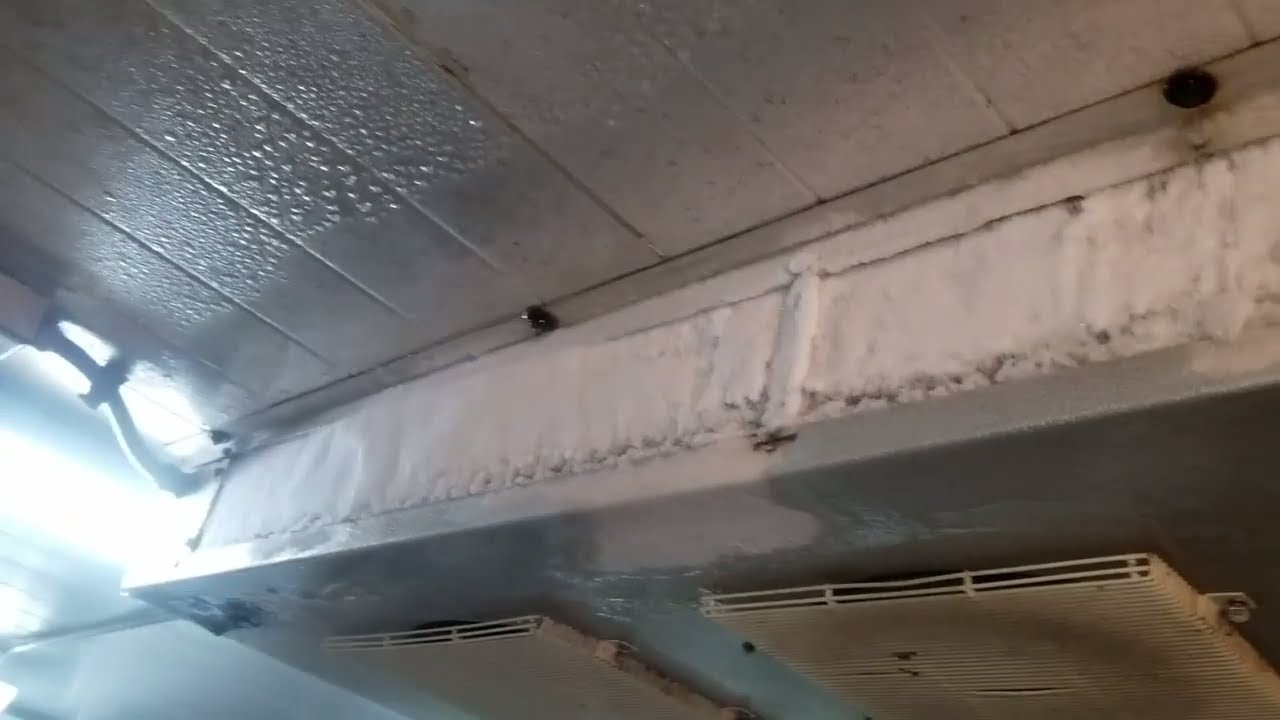

Walk-in coolers can occasionally “freeze up.” Depending on the severity of your problem, this can take many forms. On the less-problematic end, you may notice frost buildup on the windows, paneling, and outside packaging of food. On the more-problematic end, you may see large ice crystals, warming temperatures, and damaged products. Regardless of the intensity, no level of freezing up is desirable. Today, let’s better understand why your walk-in cooler may be freezing up.
Causes of Freeze Up
Depending on your specific model of a walk-in cooler, there are many reasons why ice could be building up in less-than-ideal locations. That being said, there are a few common things to look out for that may be the main culprit.
The Red Flag
- Warm, humid air. Ultimately, ice build-up occurs due to the presence of humid air. If there was no moisture content in the cooler, there would be no water vapor that could condense and freeze into ice. While understanding this concept is relatively simple, finding out the root cause can be tricky.
Where In the Walk-In?
- Damaged seals. Regardless of the type of walk-in that you have, it most certainly has a door that seals with rubber gaskets. Over time, the rubber material can start to degrade and lose some of its elasticity. When this occurs, the seal between the door and the door frame starts to lose some of its integrity. As a result, warm air will start to leak into the walk-in. In some locations, such as desert climates, this effect may not cause freeze up due to the low ambient humidity. In other locations, such as the American midwest or south, mild freeze-up can occur in just a few short hours.
- Faulty door mechanism. It is also possible that the actual door mechanism itself is to blame for any leakage of warm air. Often, hinges are to blame. Over time, as hinges grow older and become more weighted, they can become misaligned with the door and frame. This leads to gaps, often near the top or bottom of the door. Alternatively, the door closer can be faulty, not shutting the door completely. It may need to be adjusted or replaced.
- Evaporator coil. The evaporator coil is the part of your cooler that is responsible for actually removing the heat from the unit. If the thermostat is set below the unit’s minimum designed temperature – or if your thermostat is simply faulty– then excessive evaporator coil icing may occur. Your evaporator coil could also just be dirty. If you have any doubts about the functionality of the evaporator coil, direct yourself to an experienced technician who can diagnose the problem.
- Fans on the evaporator coil. Problems with the fans on the evaporator will likely lead to icing. This could look like a fan not working, rotating too slowly, or rotating in the wrong direction. All of which can lead to ice build-up.
- Defrost timer. A defrost timer shuts off the refrigerator compressor at pre-scheduled intervals in order to allow your unit to defrost. Should your defrost timer be faulty, you could see significant ice build-up in your walk-in.
- Clogged drain line. The drain line of the evaporator coil can get clogged and water vapor will back up causing icing issues around the drain or on the coil itself. This is usually easy to spot and should be fixed right away.
- Aging insulation panels. The insulation panels do just that – they keep the cold air inside the unit and the warm air outside the unit. Over time (especially if the panels are over 10 years old), the panels tend to lose some of their insulating properties. This can cause the retention of warm air and decreased efficiency, drastically increasing the operating costs of the unit.
Human Error
- Employee misuse. Lastly, excessive, humid air could be the result of employee error. Make sure employees are not stocking the unit with the door open. Even 5-10 minutes of the door being continuously open will make the walk-in’s compressor work harder than necessary and allow for the influx of large amounts of warm, humid air and therefore, ice build-up. Also, stacking product close to the evaporator will prevent the evaporator from having proper airflow.


Possible Freeze Up Damage
A walk-in cooler freezing up isn’t just a nuisance – it can damage your unit and reduce its operating lifespan. When significant amounts of ice build-up, damage can occur to many parts of the walk-in.
- Product. First, the items that are being stored in the unit may be damaged. Fruits and vegetables may last for a shorter period of time, and other foods may experience a version of “freezer burn” that is not desirable.
- Paneling and interior components. Over time, the ice from continual freeze up is liable to damage many interior components of the walk-in. Panels can degrade faster, seals and gaskets experience more stress, and mold can begin to grow.
- Compressor. Large amounts of warm air will cause the compressor to work harder over time. This may result in a shortened compressor lifespan.


How to Prevent Freeze Up
First and foremost, the manual that came with your unit will likely have a section on how to look out for and prevent freeze up. It will likely recommend routine check-ups for your unit which is a good first step in preventing build-up.
With that in mind, the primary way to prevent expensive and damaging freezing up is to catch it early! In the beginning stages of ice build-up, you may notice a thin frost layer on many surfaces in the walk-in. This is a good hint that you’ll need to check every one of the locations mentioned above and talk with employees to make sure the door is not being opened for longer than necessary and that product is being stacked away from the evaporator.
Another great way to minimize humid air infiltration is to install heavy-duty vinyl walk-in curtains. This is especially useful for reducing ice ups in units that open to hot areas, like kitchens.
While a walk-in cooler freezing up can be a hassle, it is also easy to prevent if proper maintenance protocols are followed.

